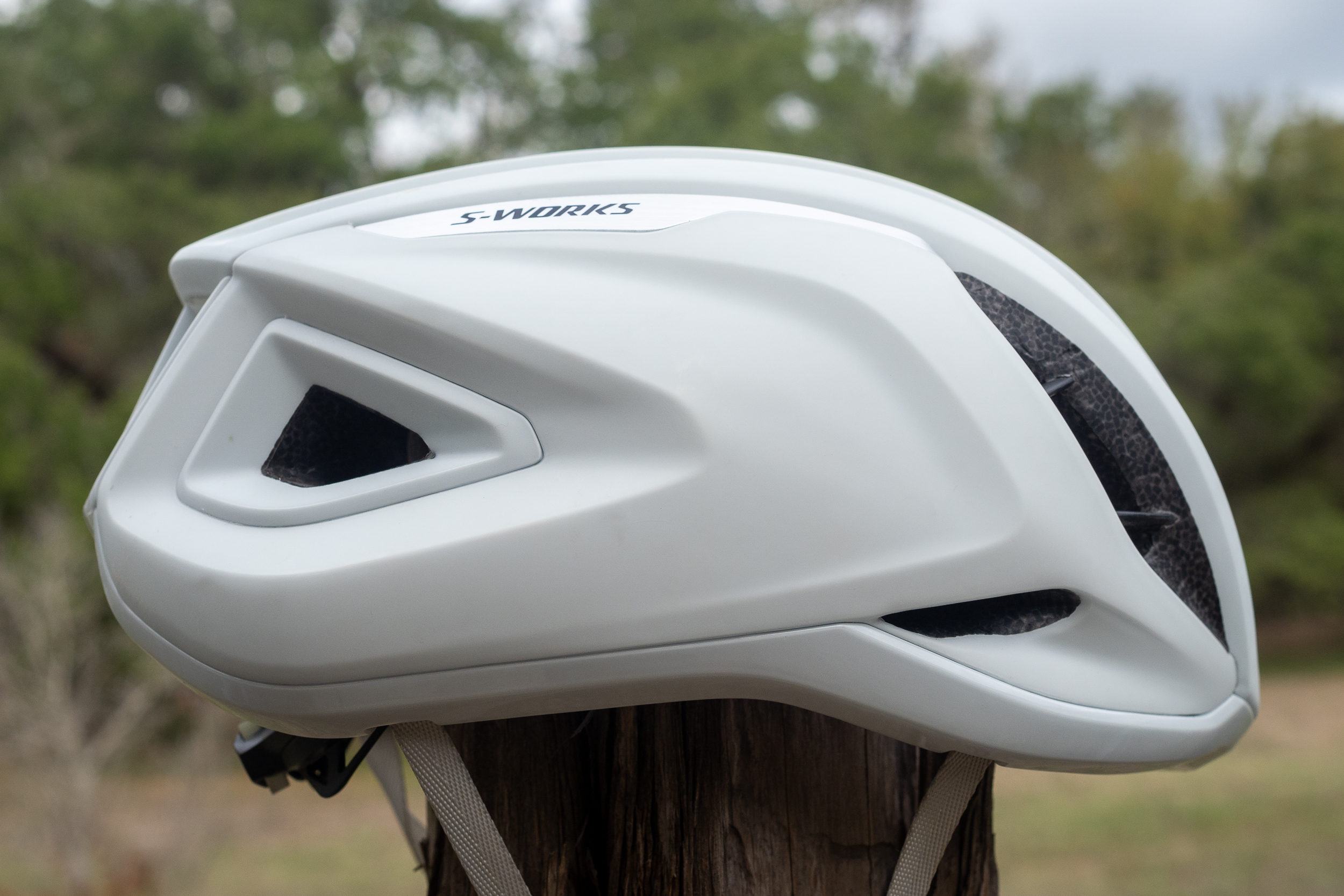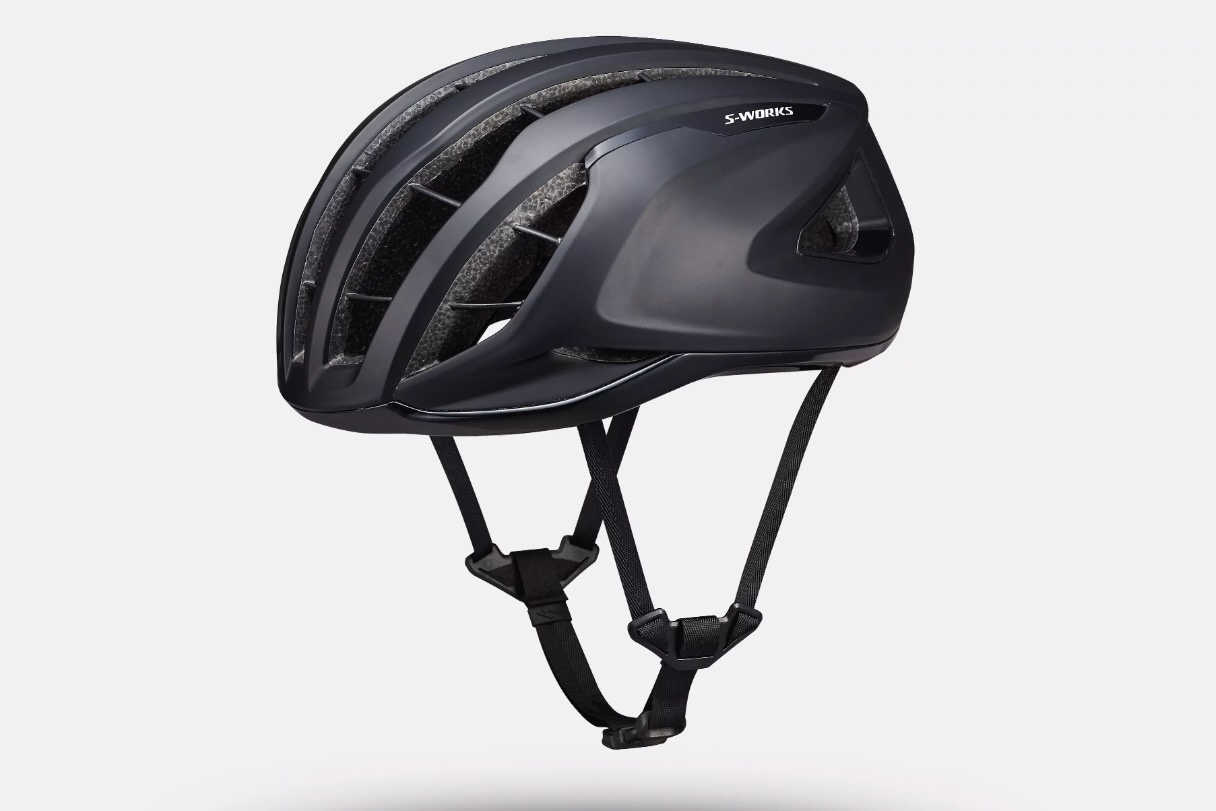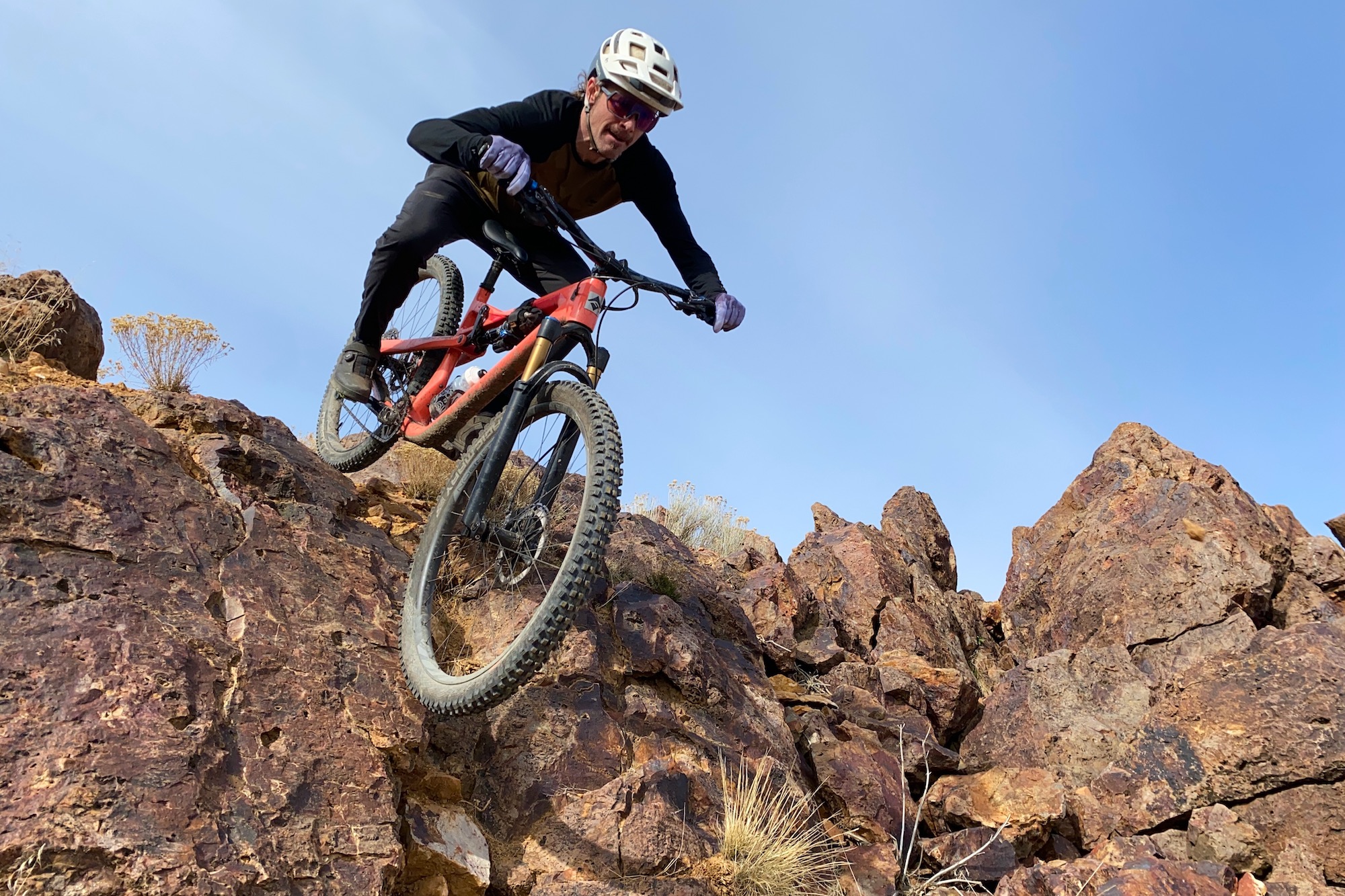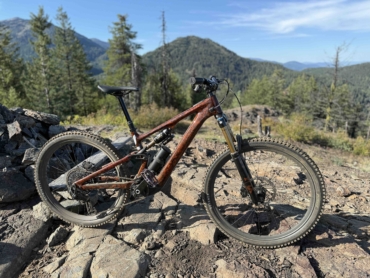The Specialized S-Works Prevail 3 launched in the summer of 2022, the brand touting it as airier and safer. It’s not super aero or uber-light, seemingly straddling the gap between a premium aero road race helmet for watt-watchers and a midlevel helmet for the serious KOM chasers.
I’ve been testing the helmet as a long-termer since its release. I was interested to see how a $300 lightweight helmet held up to constant use, and the Prevail 3 struck me as a contender for crossing over into almost all my cycling.
I used the helmet for road and gravel cycling and cross-country-style mountain biking for this review. I logged a solid year wearing the S-Works Prevail 3 in all conditions, from brutal summer droughts in Texas to barely tolerable jaunts below 40 degrees. It got soaked with sweat and whacked by branches, and I didn’t handle it with kid gloves while traveling.
In short: The Specialized Prevail 3 earned the top spot on my wall section of helmets. It was the first choice when packing for road trips when the riding style wasn’t set in stone, short of mountain bike enduro or bike park sessions. It was especially appreciated in the summer, as it was the best venting helmet I’d ever tested, and I try a lot of helmets.
-
Ventilation
9.0
-
Comfort
8.0
-
Weight
8.0
-
Value
8.5
- Weight: 322 g (Large)
- Rotational Impact Protection System: MIPS AirNode
- Number of vents: 25, but they are continuous channels
- Available sizes: S, M, L
- Virginia Tech Helmet Safety Rating: 5-star
- Colors: Black, White, Vivid Red, White Mountains, White/Black, Fjallraven Green, White sage Metallic
Pros
- Incredible venting
- Lightweight
- Durable polycarbonate exterior
- Fits oval heads well
Cons
- Too well-ventilated for cooler temperatures
- Somewhat narrow profile may not fit round heads well
- Sunglass storage ports are set very wide
- Expensive
Hit List of the Specialized S-Works Prevail 3
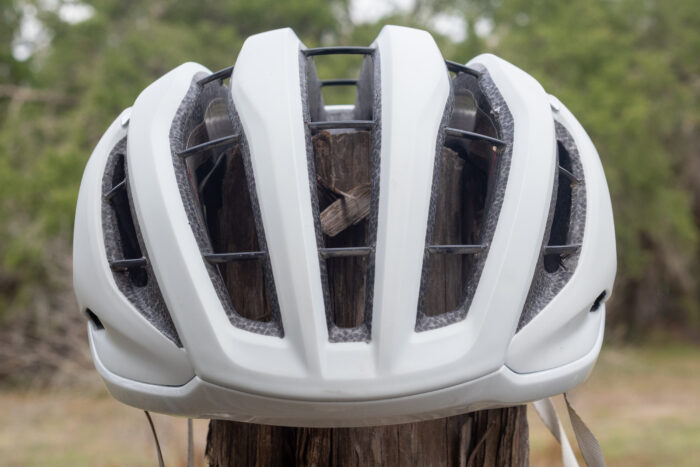
The Prevail 3 is the third iteration of the Prevail helmet, and Specialized applied its usual panache in creating changes and related buzz. Many advancements were visible when I unboxed the 322g (size L) helmet.
The Air Cage
The Prevail is the Big S’s most ventilated helmet line, and the openness of the Prevail 3 was blatant. The usual EPS foam cross bridges are gone, replaced by an aramid and carbon “Air Cage.” The lack of bulkier EPS cross bridges freed up a claimed 24.5% of the area for air passage.
Specialized maintains that even with this vastly more open “suspension bridge” architecture, the Air Cage’s aramid “cables” and carbon side panels dissipate localized forces better than EPS, rendering the Prevail 3 safer than its predecessor. This is backed up by third-party testing by Virginia Tech, which ranks the Specialized Prevail 3 as the fourth-safest helmet at the time of writing.
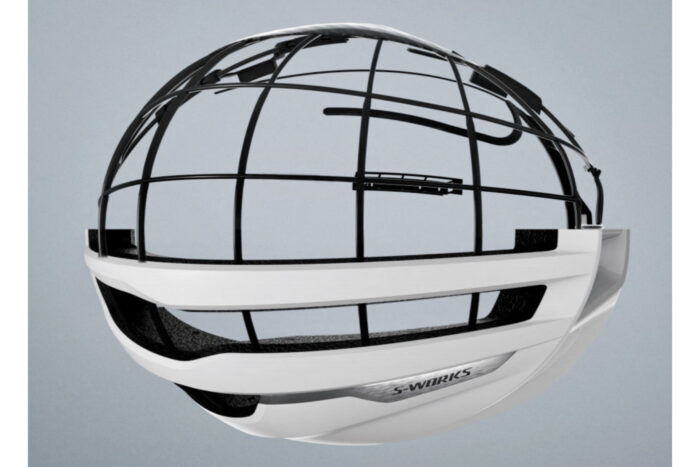
Mips Air Node Technology
Specialized kept Mips integration from blocking airflow, ditching the standard slip liner style system for “AirNode” technology. This method of mitigating rotational forces lies in the base of the comfort padding in the Prevail 3.
Nodes of hook and loop fasteners attach the narrower-than-usual comfort liner to the helmet. These nodes break free in the affected local area, dissipating the rotational force. This method of providing Mips protection adds practically no weight and doesn’t interfere with airflow like the usual yellow liner.
Other Worthy Features
The retention webbing on the “Tri-Fix” web system shrunk to 10mm wide, which Specialized claims reduces wind noise. Finally, according to the big S, the “Mindset” occipital dial tensioner received an update to improve grip.
Finally, the Specialized S-Works Prevail 3 is compatible with the Specialized ANGi Crash Sensor. It can notify emergency contacts with GPS coordinates through an app should it detect a crash and you fail to respond to a countdown. The “Occipital Base Adjustment” rear cranial support strap has a dedicated mounting point for the ANGi.
Specialized S-Works Prevail 3 Fit
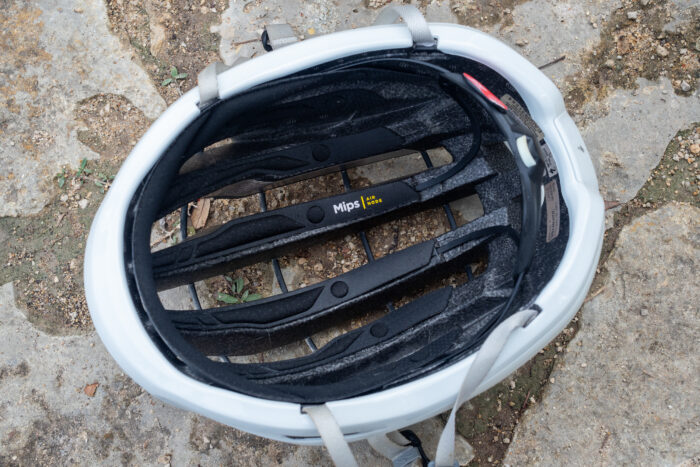
The Prevail 3 fit my decidedly oval head well; if your noggin isn’t oval, I suggest trying it on first. It has a more exaggerated elongated shape front to back than any other cycling helmet in my current collection.
The cranial support system is highly adjustable in height and width, and I found the perfect setting quickly. I never felt a hot spot, abrasion, or pressure point anywhere during the entire testing period, regardless of the type of riding.
The helmet is visibly tall and has a thick brow that points down, which gives the helmet a more prominent appearance than other road helmets. None of these visuals affected the fit or feel, however. The brow was visible sometimes when I was getting low and aero on drop bars. It didn’t bother me, but I know that anything in the visual field bothers some.
The back of the Specialized Prevail 3 has a hint of the elongated “micro diffuser” tail of the brand’s aero helmet, the S-Works Evade 3. This was added on the Prevail 3 to aid in the aerodynamics department. However, this look had nothing to do with how the helmet fit, nor did it affect the feel or balance point of the helmet.
The cranial support system did a great job keeping the helmet stable on rough, chattery gravel and rocky singletrack. Cranking down on the knob tightened the cranial web evenly and created more tension without any small areas of pressure.
The Best Venting Bike Helmet
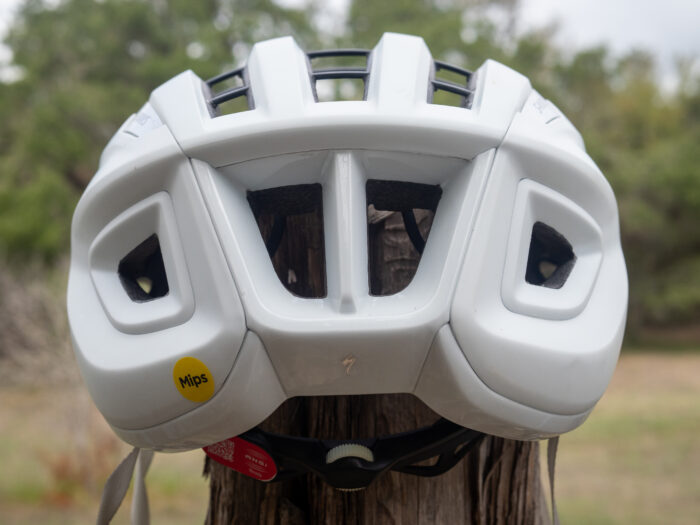
This past summer in Texas was the hottest I’ve ever experienced. Even pre-dawn starts meant riding in 90+ degree heat within 2 hours. But this is where the Specialized Prevail 3 shined. No other helmet in my possession could match the airflow that the open structure allowed.
I was testing two other high-end road helmets at the same time. The perception of airflow across my head wasn’t even in the ballpark of the Specialized S-Works Prevail 3, which was apparent even at the slower speeds of mountain biking and gravel riding.
After the first week of concurrently testing the three road helmets during the worst of the summer, I defaulted to the Prevail 3 from that point forward until recently. It was that good at venting; I have not tested a helmet better at flowing air.
Was the Specialized S-Works Prevail 3 Durable?
I set out to see if a higher-priced, usually super-lightweight helmet would be durable. And the Prevail 3 piqued my interest even more, as the open architecture could be a visual indicator of fragility. Let me start by saying I am spoiled with gear, so I’m not that careful.
I don’t flat-out abuse helmets; I won’t just drop a bare lid on the ground. But I will toss my gear bag without thinking twice, with the helmet inside. I don’t dodge tree branches to protect my lids or use the microfiber bag that comes with many high-end models. I don’t wash my helmets or comfort padding until they are offensive. I own my things; they don’t own me.
I also believe helmets should be durable through daily transport and occasional travel without extra care. When helmets started coming with protective cases, I said, “WTF? Do I have to put a case on the helmet to travel with it? It’s supposed to protect my skull in a crash!” So yes, I have a bunch of dinged cycling helmets.
The Specialized S-Works Prevail 3 emerged from a year of riding, traveling, and my usual haphazard treatment in great form. The exterior polycarbonate shell feels robust, especially along the bottom edge, which gets the most damage on uber-light iids in my experience. The Prevail 3 only suffered a few scuffs from tree branches and dirty straps. Structurally, it is the same as the day I unboxed it. I hardly say that about anything I test.
I found the S-Works Prevail 3 to be a welcome change from the almost fragile-feeling, super-lightweight helmets I have received in the past few years.
Final Thoughts
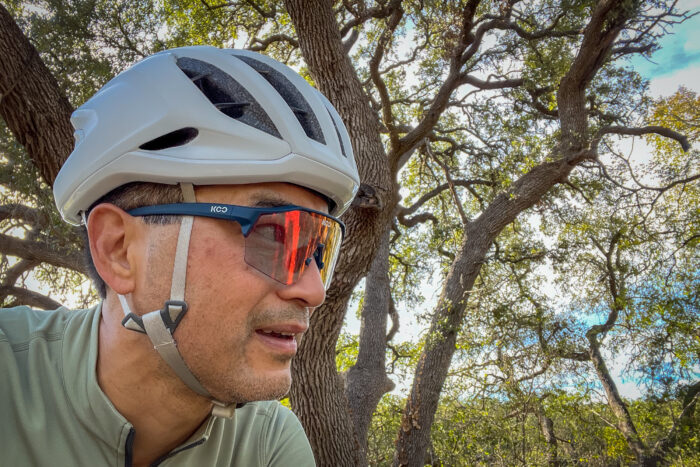
The Specialized S-Works Prevail 3 is a category crosser, refusing conformity in the cycling industry’s penchant for narrowing niches. It’s not the lightest helmet nor an “aero is everything” road model. It works well as a durable gravel lid and light cross-country mountain biking helmet. And in all use cases, it’s as airy as they come.
And for a lightweight helmet, the Prevail 3 proved durable after a year of constant use and regular travel. I cannot say this about many premium helmets, where higher prices often mean lower weight but more fragility. Yes, it’s an expensive helmet, but rest assured it will last.
If you don’t want to buy a quiver of helmets and ride road, gravel, and cross-country MTB, the Specialized S-Works Prevail 3 is a contender. And it’s a hands-down winner for summer riding in warmer climates.
